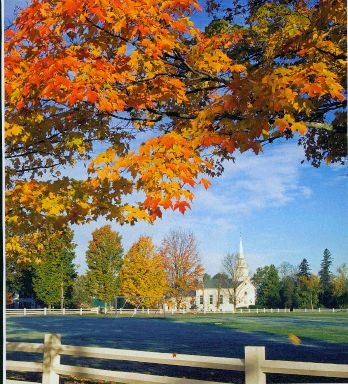Return to Gwyneth Walker Music Catalog
Read a review of Craftsbury Trio (1990) for piano trio by Claire Fern, The Hardwick Gazette.
Read a review of Craftsbury Trio (1990) for piano trio by Jim Lowe, The Times Argus.
Listen to a RealAudio (G2) stream of the first movement of this work performed by the Craftsbury Chamber Players.
Listen to a RealAudio (G2) stream of the second movement of this work
Listen to a RealAudio (G2) stream of the third and fourth movements of this work
Download an MP3 file of the first movement of this work performed by the Craftsbury Chamber Players.
Download an MP3 file of the second movement of this work.
Download an MP3 file of the third movement of this work.
Download an MP3 file of the fourth movement of this work.
View/download a PDF file of selected sample pages from the first movement of this work.
View/download a PDF file of selected sample pages from the second movement of this work.
View/download a PDF file of selected sample pages from the third movement of this work.
View/download a PDF file of selected sample pages from the fourth movement of this work.
(Photograph of Craftsbury Common)

Commissioned by the Craftsbury Chamber Players in celebration of its 25th season, 1966-1990.
Craftsbury, Vermont is a place of open and stark landscape with a gentle place of life. In writing Craftsbury Trio, I have attempted to express these impressions through a direct and uncluttered musical language. In the tradition of composers over the centuries, I have taken the initial of the subject and translated it to its name key: C -- the most basic of all tonalities. To me, it relates to the requirements of simplicity and clarity in writing a musical portrait of this place.
The first movement, "Up-Country Toccata", carries a tempo marking of "lively," and serves to introduce the players to the audience. In its function of initiating the C tonality of the work (C Minor here, C Dorian and C Major in later movements), the music establishes the tonality without modulation. I sought to combine the energy of a keyboard toccata with the primarily percussive gestures in the strings. The cadenza passage near the end allows the pianist to roam freely over the keyboard before sliding into a final refrain.
A rubato passage leads into "The Lark in the Morning," loosely based on the folksong with lyrics "the lark in the morning, she sings as she flies." Although the melody originally lies in the major mode, it soon moves to the natural minor mode to emphasize what I hear as a mournful quality in the song. Thus, the character of the music is intended to become plaintive and to grow in intensity as the lines overlap in increasingly tight stretto. At the end, the lines ascend (the lark flies away), with final taping sounds suggestive of fluttering wings.
"You Can Buy It at the General Store" is a playful homage to those country stores where one can buy anything -- from fly paper and fishing tackle to imported gourmet foods. One can find a little of everything at the general store. . .or in this movement!
In the center of the town of Craftsbury, on a small plateau opening into broad views of the surrounding mountains, is the village green, Craftsbury Common. This plot of land is enclosed by a white, split-rail fence. There is a purity to this scene. The common, and its few neighboring wooden buildings, appears unchanged over the centuries. And time stands still here. "Craftsbury Common" is an elegy to this quiet, haunting beauty. Through this music I have endeavored to capture the qualities of openness (5ths), timelessness (static chords, repeating patterns, slow tempo), reverence (cello theme), starkness (economy of notes), yearning (surging lines), and purity (C Major).
Notes by the composer